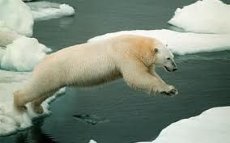Environmentalists: by 2100, every tenth species is threatened with extinction
Last reviewed: 23.04.2024

All iLive content is medically reviewed or fact checked to ensure as much factual accuracy as possible.
We have strict sourcing guidelines and only link to reputable media sites, academic research institutions and, whenever possible, medically peer reviewed studies. Note that the numbers in parentheses ([1], [2], etc.) are clickable links to these studies.
If you feel that any of our content is inaccurate, out-of-date, or otherwise questionable, please select it and press Ctrl + Enter.

With the current climate change trends remaining, one in ten species is threatened with extinction by 2100, researchers from the University of Exeter (UK) concluded. Scientists have taken the Red Book and reviewed about 200 predictions regarding the effects of climate change, as well as 130 reports on the changes that have already occurred.
Science is not entirely sure how flora and fauna will respond to global warming, so it approaches the issue with great caution. Nevertheless, there are studies showing how animals and plants adapt to changes, so predictions can already be verified. The largest review of such studies in history has made it clear that the forecasts are generally accurate.
Ilya Mclean, the lead author of the work, notes: "Our study is an alarming signal for many species whose numbers are already decreasing and which can disappear altogether if this continues. It's time to stop flirting with uncertainty, this excuse is no longer valid. The consequences of climate change are already felt. " Scientists emphasize that global warming is effective all over the world and among all groups of animals and plants. Here are some examples of how life reacts to changing habitat conditions.
Reducing the ice cover in the Bering Sea has led to a reduction in the number of bivalve mollusks from twelve to three per square meter during only 1999-2001. By the way, these animals are the main source of food for a variety of species, standing higher in the food chain, especially for spectacled eiders.
Warming and drought cause a sharp decrease in the number of once widespread species of amphibians Yellowstone National Park (USA). From 1992-1993 to 2006-2008, the number of tiger salamander populations decreased by almost half, spotted tree frogs by 68%, and marsh frogs by 75%.
In Antarctica there are few animals, but they also suffered: in 1993-2005 the number of nematodes decreased by 65%.
But what is worth waiting for. Endemic about. Tenerife (Canary Islands) Caňadas cedar has a 74-83 percent chance of disappearing within a hundred years due to the drought caused by the transformation of the global climate. In Madagascar, warming will cause endemic reptiles and amphibians to retreat higher into the mountains. If the temperature rises by only 2 ˚C, three species will lose their habitat completely. The number of birds living in the northern boreal forests of Europe will also decrease: the number of rye-ducks by the year of 2100 may decrease by 97%, and there will simply be nowhere to live species like white-winged fowl and stink.

 [
[